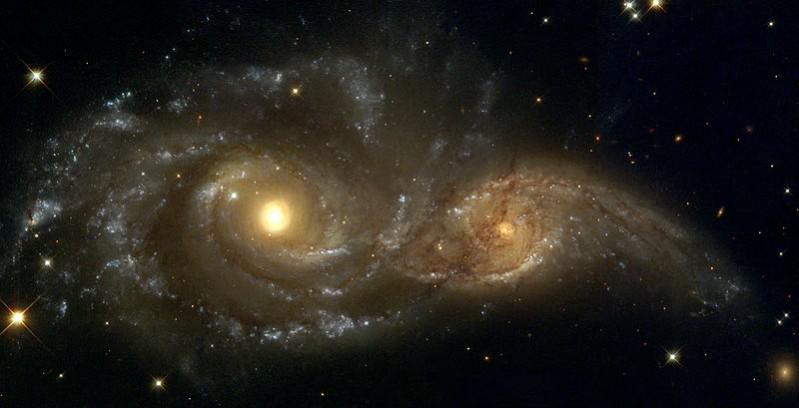
Astronomers believe the Andromeda and the Milky Way galaxies will collide in 4 billion years and become one forever. However, Andromeda will not be able to overpower our galaxy entirely as it is not as big as it was believed to be.
Yes, the Andromeda galaxy was thought to be three times as big as the Milky Way, but a recent study has shown that we overestimated our cosmic neighbor, which is located 2.5 million light years away from us.
Astronomers at the International Centre for Radio Astronomy Research (ICRAR) in Australia have concluded that Andromeda is 800 billion times heavier than the Sun, which makes it similar to the Milky Way.
The team studied escape velocity to determine the size of the galaxy, which is named after the mythological Greek princess Andromeda. They calculated the speed that a quick-moving star would need to escape the gravitational pull of its host galaxy to speculate the size of the concerned galaxy.
Physics defines escape velocity as the minimum velocity required for an object to escape the gravitational influence of a massive body.
"When a rocket is launched into space, it is thrown out with a speed of 11 km/s to overcome the Earth's gravitational pull... Our home galaxy, the Milky Way, is over a trillion times heavier than our tiny planet Earth so to escape its gravitational pull we have to launch with a speed of 550 km/s. We used this technique to tie down the mass of Andromeda," said astrophysicist Dr Prajwal Kafle from the University of Western Australia branch of ICRAR, according to an official statement on the ICRAR website.
Kafle used the same technique to study the mass of the Milky Way in 2014. He concluded that our galaxy has lesser dark matter than previously thought. Dark matter is a hypothetical type of matter that has gravity but does not interact with light.
Similarly, the astrophysicist said, the amount of dark matter in the Andromeda is actually a third of what was previously believed.
Though scientists are unable to say exactly what will happen when these two galaxies collide, one thing is sure that these new findings have completely altered their understanding of the cosmic bodies.
"It's really exciting that we've been able to come up with a new method and suddenly 50 years of collective understanding of the Local Group has been turned on its head," said Kafle.
Local Group is the name of a galaxy cluster and Andromeda is the largest galaxy in it. Milky Way and Triangulum are two more galaxies in the cluster.
Andromeda galaxy, which is a spiral galaxy, is so huge that its diameter is estimated to be 260,000 light years.
Not only this, Andromeda has a very special characteristic. It has a double nucleus. This means at the center there is a massive cluster of stars, while at the core, there is at least one super-massive black hole.
Meanwhile, watch the simulation of what may happen when Andomeda and the Milky Way collide:





!['Had denied Housefull franchise as they wanted me to wear a bikini': Tia Bajpai on turning down bold scripts [Exclusive]](https://data1.ibtimes.co.in/en/full/806605/had-denied-housefull-franchise-they-wanted-me-wear-bikini-tia-bajpai-turning-down-bold.png?w=220&h=138)



